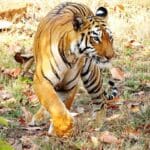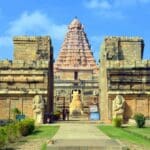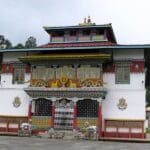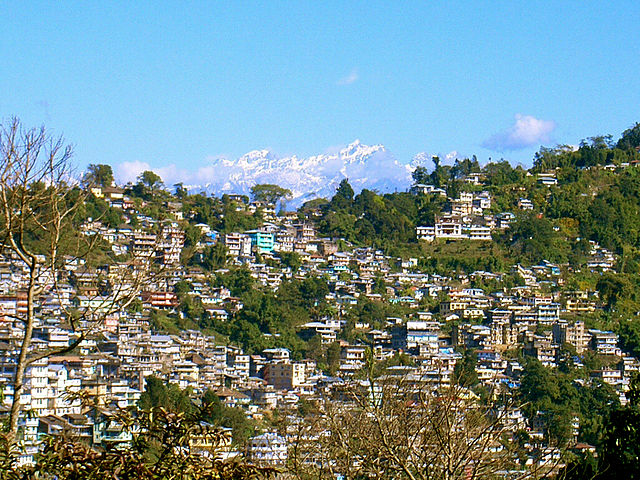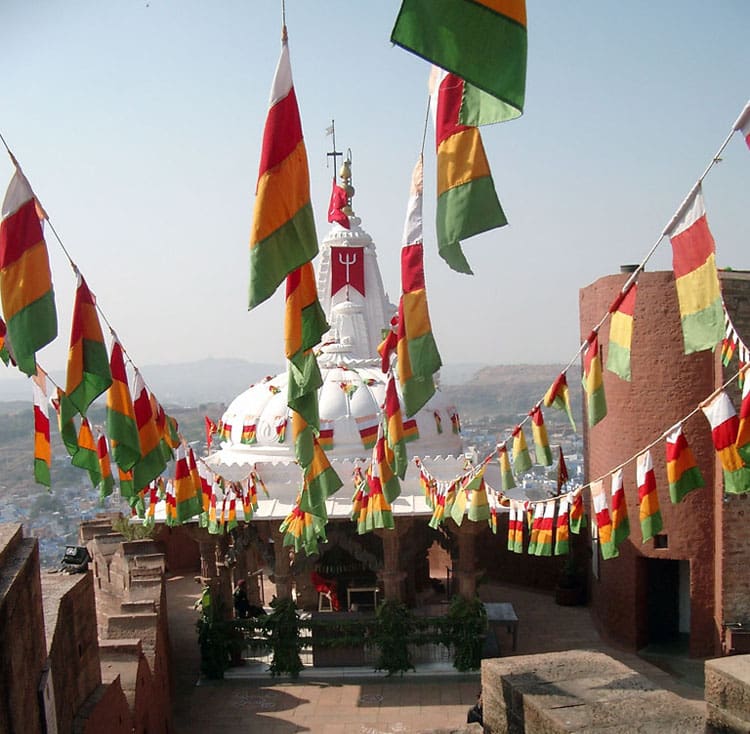Welcome to Dachigam National Park, a mesmerizing wilderness nestled in the heart of Jammu and Kashmir, India’s northernmost state. Spread over an expansive area of 141 square kilometers, this national park is a haven for nature enthusiasts, wildlife photographers, and adventure seekers alike. Let’s embark on a journey to uncover the wonders of this pristine sanctuary.
Places to Visit
1. Dachigam Valley:
The crown jewel of the park, Dachigam Valley, is renowned for its breathtaking landscapes and diverse flora and fauna. Nestled amidst the mighty Himalayas, this valley offers panoramic views of snow-capped peaks, verdant meadows, and glistening streams. Visitors can indulge in scenic hikes, birdwatching, and wildlife spotting amidst the tranquil surroundings.
2. Machoi Waterfall:
Nature lovers shouldn’t miss the majestic Machoi Waterfall, where cascading waters create a symphony of sights and sounds. Located deep within the park, this hidden gem is accessible via a picturesque trek through dense forests. It’s an ideal spot for picnics and relaxation amid nature’s splendor.
3. Sheeshnag Lake:
Nestled amidst verdant meadows and towering mountains, Sheeshnag Lake offers a serene escape from the hustle and bustle of city life. Surrounded by lush greenery and pristine wilderness, this shimmering lake is a paradise for photographers and solitude seekers. Visitors can enjoy boating or simply soak in the serene ambiance while marveling at the reflections of the surrounding peaks on the crystal-clear waters.
Things to Do
1. Wildlife Safari:
Embark on an exhilarating wildlife safari through the park’s dense forests to catch glimpses of rare species like the Hangul Deer, Leopard, and Black Bear in their natural habitat. Led by experienced guides, these safaris offer a thrilling opportunity to observe wildlife up close while learning about their behavior and conservation efforts.
2. Birdwatching:
With over 150 species of birds, including the elusive Kashmir Flycatcher, Himalayan Monal, and the majestic Golden Eagle, Dachigam National Park is a paradise for birdwatchers and ornithologists. From vibrant songbirds to majestic birds of prey, the park’s diverse avian population offers endless opportunities for birdwatching enthusiasts to spot and photograph rare and migratory species amidst the pristine Himalayan landscapes.
3. Trekking:
Adventure enthusiasts can explore the park’s rugged terrain on thrilling trekking trails that offer panoramic views of the surrounding mountains and valleys. From leisurely hikes to challenging treks, Dachigam National Park offers a variety of trekking options for adventurers of all skill levels. Traverse through dense forests, alpine meadows, and high-altitude passes while soaking in the breathtaking vistas of snow-capped peaks and pristine wilderness.
Climatic Conditions
Dachigam National Park experiences a temperate climate with cool summers and cold winters. The summer months (April to June) are characterized by mild temperatures, clear skies, and blooming wildflowers, making it the ideal time to visit the park. The monsoon season (July to September) brings occasional rainfall, which rejuvenates the park’s lush vegetation and creates a picturesque landscape. The winter months (October to March) are cold and snowy, with temperatures dropping below freezing point, especially at higher altitudes.
How to Reach
By Air:
The nearest airport to Dachigam National Park is the Srinagar International Airport, located approximately 22 kilometers away. From there, visitors can hire taxis or take buses to reach the park, which is well-connected by roadways.
By Road:
The park is easily accessible by road from major cities like Srinagar and Jammu. Regular bus services operate from these cities to Dachigam National Park, offering a convenient mode of transportation for visitors. Private taxis and rental cars are also available for those preferring a more personalized travel experience.
History
Dachigam National Park holds a rich cultural and ecological heritage dating back centuries. The park was established in 1910 to protect the endangered Hangul Deer, which is native to the region and found only in the dense forests of Dachigam. Over the years, it has evolved into a biodiversity hotspot and a vital conservation area for various flora and fauna endemic to the Western Himalayas.
Food
Visitors to Dachigam National Park can savor traditional Kashmiri cuisine at the local eateries near the park entrance. From aromatic Rogan Josh to flavorful Yakhni, Kashmiri cuisine is known for its rich flavors and unique culinary techniques. Don’t miss the opportunity to indulge in a traditional Kashmiri feast comprising of mouthwatering delicacies like Gushtaba, Wazwan, and Kahwa, which are sure to tantalize your taste buds and leave you craving for more.
Accessibility and Accommodation
Accommodation options near Dachigam National Park range from budget guesthouses to luxury resorts, offering comfortable stays amidst nature’s embrace. Whether you prefer cozy homestays or luxurious cottages overlooking the valley, there’s something for every traveler’s preference and budget. It’s advisable to book accommodation in advance, especially during the peak tourist season, to ensure a hassle-free and enjoyable stay.
Nearby Hotels & Restaurants
- Hotel Pine Spring Srinagar: Located in close proximity to the park, this hotel offers cozy rooms and delicious Kashmiri cuisine, making it an ideal choice for travelers seeking comfort and convenience.
- The Lalit Grand Palace Srinagar: Experience luxury at its best at this exquisite hotel, featuring opulent rooms, fine dining, and breathtaking views of the surrounding mountains. Indulge in gourmet cuisine prepared by expert chefs or pamper yourself with rejuvenating spa treatments amidst the tranquil Himalayan landscapes.
Tourist Map
For an immersive experience, visitors can obtain a tourist map of Dachigam National Park from the park’s entrance gate, outlining key attractions, trekking trails, and facilities. The map provides valuable information about the park’s topography, wildlife habitats, and conservation areas, helping visitors navigate through the park with ease and plan their itinerary accordingly.
Distance From Major Cities
- Srinagar: Approximately 22 kilometers
- Jammu: Approximately 272 kilometers
Nearest Airport
Srinagar International Airport
Nearby Places
1. Srinagar:
Explore the charming city of Srinagar, known for its picturesque gardens, serene lakes, and vibrant culture. Visit iconic attractions like Dal Lake, Shalimar Bagh, and Nishat Bagh, or embark on a shikara ride amidst the floating gardens of Nigeen Lake for a memorable experience.
2. Gulmarg:
Discover the scenic beauty of Gulmarg, a popular hill station renowned for its skiing slopes, meadows, and gondola rides. Embark on thrilling adventures like skiing, snowboarding, and trekking amidst the snow-capped peaks of the Pir Panjal range, or simply unwind amidst the tranquil surroundings of this idyllic hill station.
Tourist Attractions
Betaab Valley
Betaab Valley, named after the Bollywood movie “Betaab” that was shot here, is a picturesque destination nestled amidst the stunning landscapes of Dachigam National Park. Surrounded by lush green meadows, towering mountains, and glistening streams, Betaab Valley offers a tranquil retreat for nature lovers and adventure enthusiasts alike. Visitors can indulge in leisurely walks, horse riding, and picnics amidst the breathtaking scenery of snow-capped peaks and vibrant flora. The valley is also a popular filming location, attracting tourists with its serene ambiance and scenic beauty.
Pari Mahal
Perched atop Zabarwan Mountain Range overlooking the shimmering waters of Dal Lake, Pari Mahal is a historic monument renowned for its exquisite Mughal architecture and breathtaking panoramic views. Built in the 17th century by Dara Shikoh, the eldest son of Mughal Emperor Shah Jahan, Pari Mahal served as a majestic abode and observatory for studying astrology and astronomy. Today, it stands as a testament to the rich cultural heritage of Kashmir, attracting visitors with its intricate carvings, landscaped gardens, and captivating vistas of the surrounding mountains and valleys.
Chashme Shahi
Nestled amidst verdant gardens and cascading waterfalls, Chashme Shahi is a beautiful Mughal garden renowned for its natural springs and tranquil ambiance. Built in the 17th century by the Mughal emperor Shah Jahan, the garden is adorned with terraced lawns, vibrant flowers, and terraced pavilions, making it a popular retreat for locals and tourists alike. Visitors can relax amidst the serene surroundings, sip on refreshing spring water, and soak in the panoramic views of the Zabarwan Range and Dal Lake from the garden’s elevated terraces.
Hazratbal Shrine
Located on the banks of Dal Lake, Hazratbal Shrine is a revered Muslim shrine that holds immense religious significance for followers of Islam. Housing the sacred relic of Prophet Muhammad’s hair, the shrine is visited by devotees from far and wide who come to offer prayers and seek blessings. With its pristine white marble architecture, tranquil surroundings, and panoramic views of the lake, Hazratbal Shrine is not only a place of worship but also a symbol of spiritual devotion and cultural heritage. Visitors can experience the serene ambiance, participate in religious ceremonies, and admire the intricate craftsmanship of the shrine’s architecture.
How To
For an unforgettable experience at Dachigam National Park, remember to:
- Plan Ahead: Before visiting the park, research about its attractions, activities, and accommodation options to plan your itinerary accordingly. Consider factors like weather conditions, peak tourist seasons, and entry requirements to make the most of your trip.
- Pack Essentials: Pack essentials like sunscreen, insect repellent, comfortable clothing, sturdy shoes, a hat, sunglasses, a reusable water bottle, and a first-aid kit to ensure a comfortable and safe experience. Additionally, don’t forget to carry your camera and binoculars to capture the breathtaking landscapes and wildlife sightings during your visit.
- Respect Wildlife: Dachigam National Park is home to a diverse range of wildlife species, including endangered ones like the Hangul Deer. Maintain a safe distance from wild animals, refrain from feeding them, and avoid making loud noises to ensure their safety and preserve their natural behavior.
- Follow Park Rules: Abide by the park regulations, such as staying on designated trails, avoiding littering, and refraining from disturbing wildlife, to ensure a safe and enjoyable experience for yourself and others. Respect the park’s natural environment and adhere to guidelines set forth by park authorities to minimize your ecological footprint.
- Engage in Responsible Tourism: Practice responsible tourism by minimizing your impact on the environment, supporting local communities, and contributing to conservation efforts. Choose eco-friendly accommodation options, opt for guided tours led by certified local guides, and purchase souvenirs and handicrafts from local artisans to promote sustainable tourism practices.
Travel Tips
- Dress in Layers: The weather can be unpredictable, so it’s advisable to dress in layers to stay comfortable and adapt to changing temperatures throughout the day.
- Stay Hydrated: Carry an adequate supply of water, especially during trekking or wildlife safaris, to stay hydrated and energized throughout your journey.
- Respect Wildlife: Maintain a safe distance from wild animals and refrain from feeding them to ensure their safety and preserve their natural behavior.
- Follow Park Rules: Abide by the park regulations, such as staying on designated trails, avoiding littering, and refraining from disturbing wildlife, to ensure a safe and enjoyable experience for yourself and others.
- Carry Essentials: Pack essentials like sunscreen, insect repellent, and a first-aid kit for a hassle-free trip. Additionally, don’t forget to carry your camera and binoculars to capture the breathtaking landscapes and wildlife sightings during your visit.
FAQS
- Is Dachigam National Park open throughout the year? Yes, the park remains open for visitors throughout the year, although certain areas may be inaccessible during the winter months due to heavy snowfall.
- Are there accommodation facilities available within the park? No, there are no accommodation facilities within the park premises. However, visitors can find a range of options in nearby towns and cities, including hotels, guesthouses, and homestays.
- Is photography allowed inside the park? Yes, photography is permitted for personal use. However, commercial photography requires prior permission from the authorities, and drone photography is strictly prohibited.
- Are there any guided tours available? Yes, guided tours can be arranged through authorized tour operators or the park authorities for a more informative experience. These tours are led by experienced guides who provide valuable insights into the park’s biodiversity, history, and conservation efforts.
- What wildlife can be spotted in Dachigam National Park? Visitors can spot a variety of wildlife, including the Hangul Deer, Leopard, Black Bear, Himalayan Brown Bear, and numerous bird species like the Kashmir Flycatcher, Himalayan Monal, and Golden Eagle.
- Are there any entry fees for visiting the park? Yes, a nominal entry fee is charged for visitors, which helps in the conservation efforts and maintenance of the park. The entry fee varies for Indian and foreign nationals and is subject to change, so it’s advisable to check the latest rates before planning your visit.
- Can we carry food inside the park? It’s advisable to avoid carrying food inside the park to prevent littering and attracting wild animals. However, visitors can enjoy picnics at designated areas outside the park premises or opt for dining options available in nearby towns and cities.
- Is camping allowed inside the park? No, camping is not permitted inside the park premises. However, there are designated camping sites in nearby areas, where visitors can enjoy overnight stays amidst nature’s tranquility. It’s essential to obtain necessary permits and follow camping regulations to ensure a safe and enjoyable experience.
- What is the best time to spot migratory birds in the park? The best time to spot migratory birds is during the winter months (November to February) when they flock to the park in large numbers, seeking refuge from the harsh winter conditions in their breeding grounds. Birdwatchers can witness a diverse array of migratory species, including waterfowl, waders, and birds of prey, making it an ideal time for birdwatching enthusiasts to visit the park.
- Are there any restrictions on trekking routes? Certain trekking routes may have restrictions or require permits, especially those passing through sensitive wildlife habitats or conservation areas. It’s essential to inquire beforehand and obtain necessary permits from the park authorities to ensure a safe and enjoyable trekking experience.





